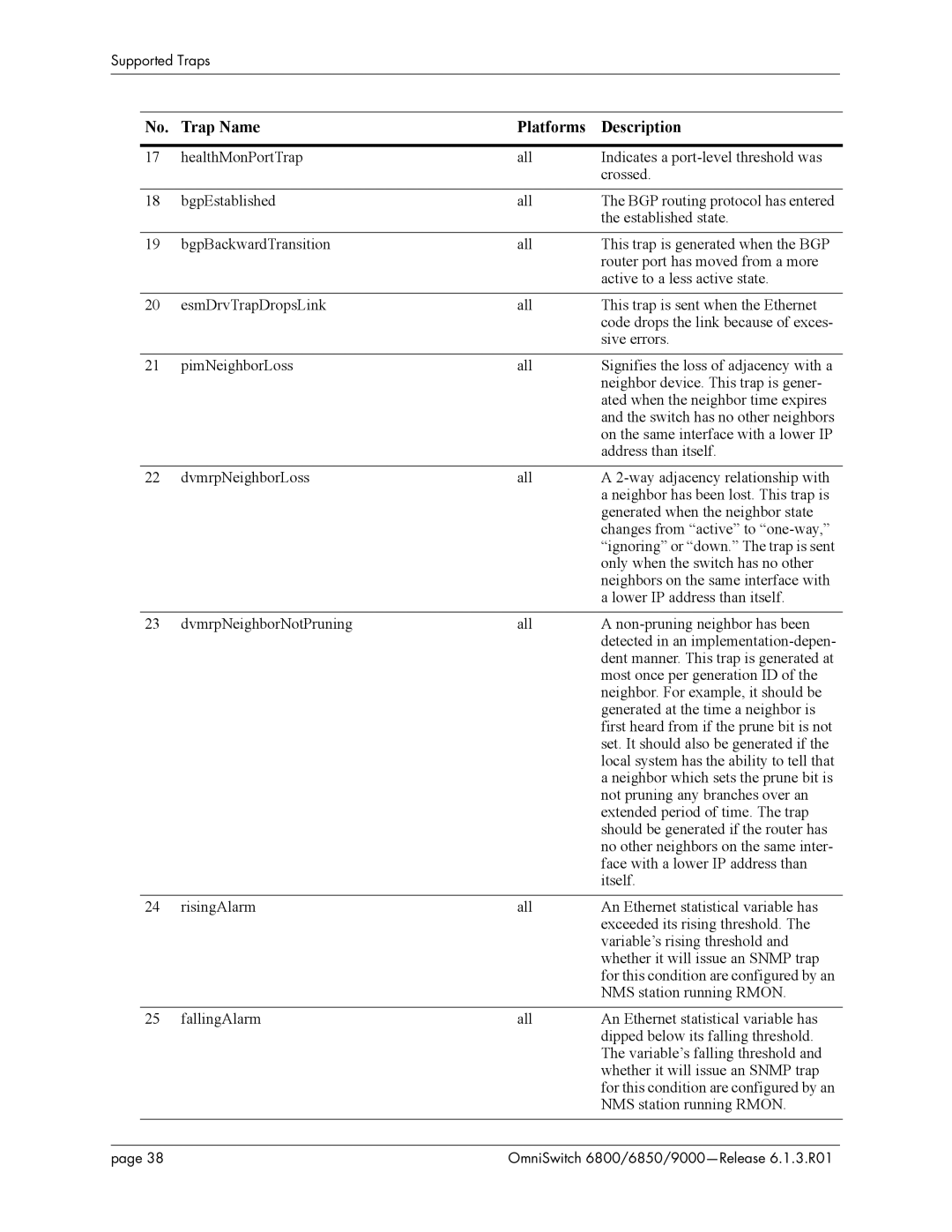
Supported Traps
No. | Trap Name | Platforms | Description |
|
|
|
|
17 | healthMonPortTrap | all | Indicates a |
|
|
| crossed. |
|
|
|
|
18 | bgpEstablished | all | The BGP routing protocol has entered |
|
|
| the established state. |
|
|
|
|
19 | bgpBackwardTransition | all | This trap is generated when the BGP |
|
|
| router port has moved from a more |
|
|
| active to a less active state. |
|
|
|
|
20 | esmDrvTrapDropsLink | all | This trap is sent when the Ethernet |
|
|
| code drops the link because of exces- |
|
|
| sive errors. |
|
|
|
|
21 | pimNeighborLoss | all | Signifies the loss of adjacency with a |
|
|
| neighbor device. This trap is gener- |
|
|
| ated when the neighbor time expires |
|
|
| and the switch has no other neighbors |
|
|
| on the same interface with a lower IP |
|
|
| address than itself. |
|
|
|
|
22 | dvmrpNeighborLoss | all | A |
|
|
| a neighbor has been lost. This trap is |
|
|
| generated when the neighbor state |
|
|
| changes from “active” to |
|
|
| “ignoring” or “down.” The trap is sent |
|
|
| only when the switch has no other |
|
|
| neighbors on the same interface with |
|
|
| a lower IP address than itself. |
|
|
|
|
23 | dvmrpNeighborNotPruning | all | A |
|
|
| detected in an |
|
|
| dent manner. This trap is generated at |
|
|
| most once per generation ID of the |
|
|
| neighbor. For example, it should be |
|
|
| generated at the time a neighbor is |
|
|
| first heard from if the prune bit is not |
|
|
| set. It should also be generated if the |
|
|
| local system has the ability to tell that |
|
|
| a neighbor which sets the prune bit is |
|
|
| not pruning any branches over an |
|
|
| extended period of time. The trap |
|
|
| should be generated if the router has |
|
|
| no other neighbors on the same inter- |
|
|
| face with a lower IP address than |
|
|
| itself. |
|
|
|
|
24 | risingAlarm | all | An Ethernet statistical variable has |
|
|
| exceeded its rising threshold. The |
|
|
| variable’s rising threshold and |
|
|
| whether it will issue an SNMP trap |
|
|
| for this condition are configured by an |
|
|
| NMS station running RMON. |
|
|
|
|
25 | fallingAlarm | all | An Ethernet statistical variable has |
|
|
| dipped below its falling threshold. |
|
|
| The variable’s falling threshold and |
whether it will issue an SNMP trap for this condition are configured by an NMS station running RMON.
page 38 | OmniSwitch |
